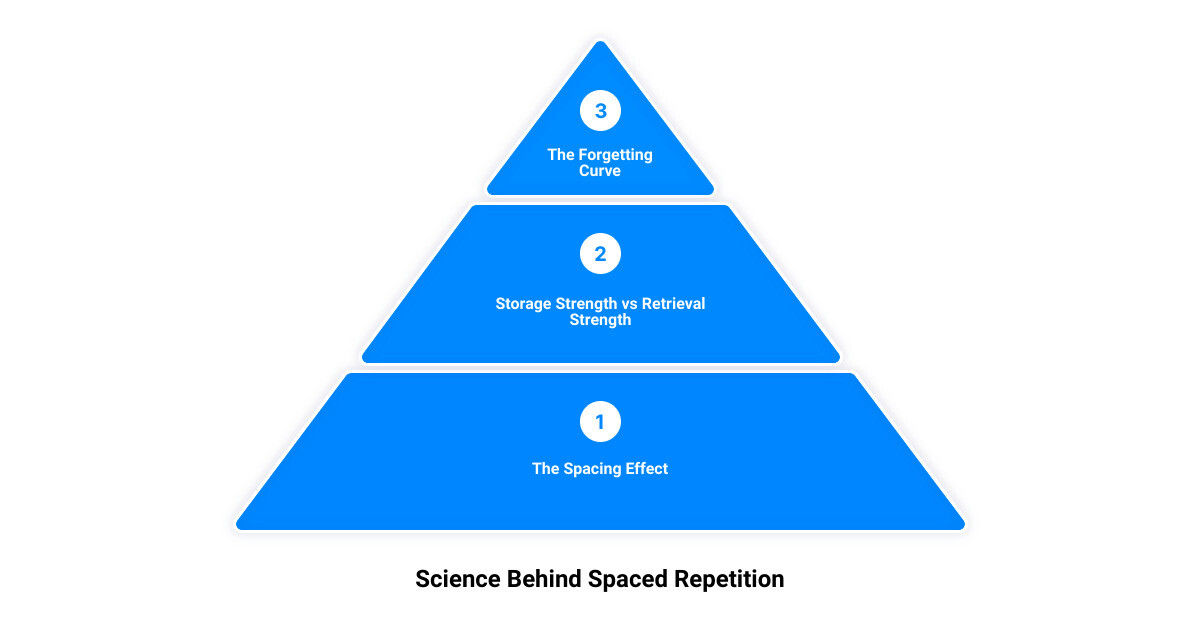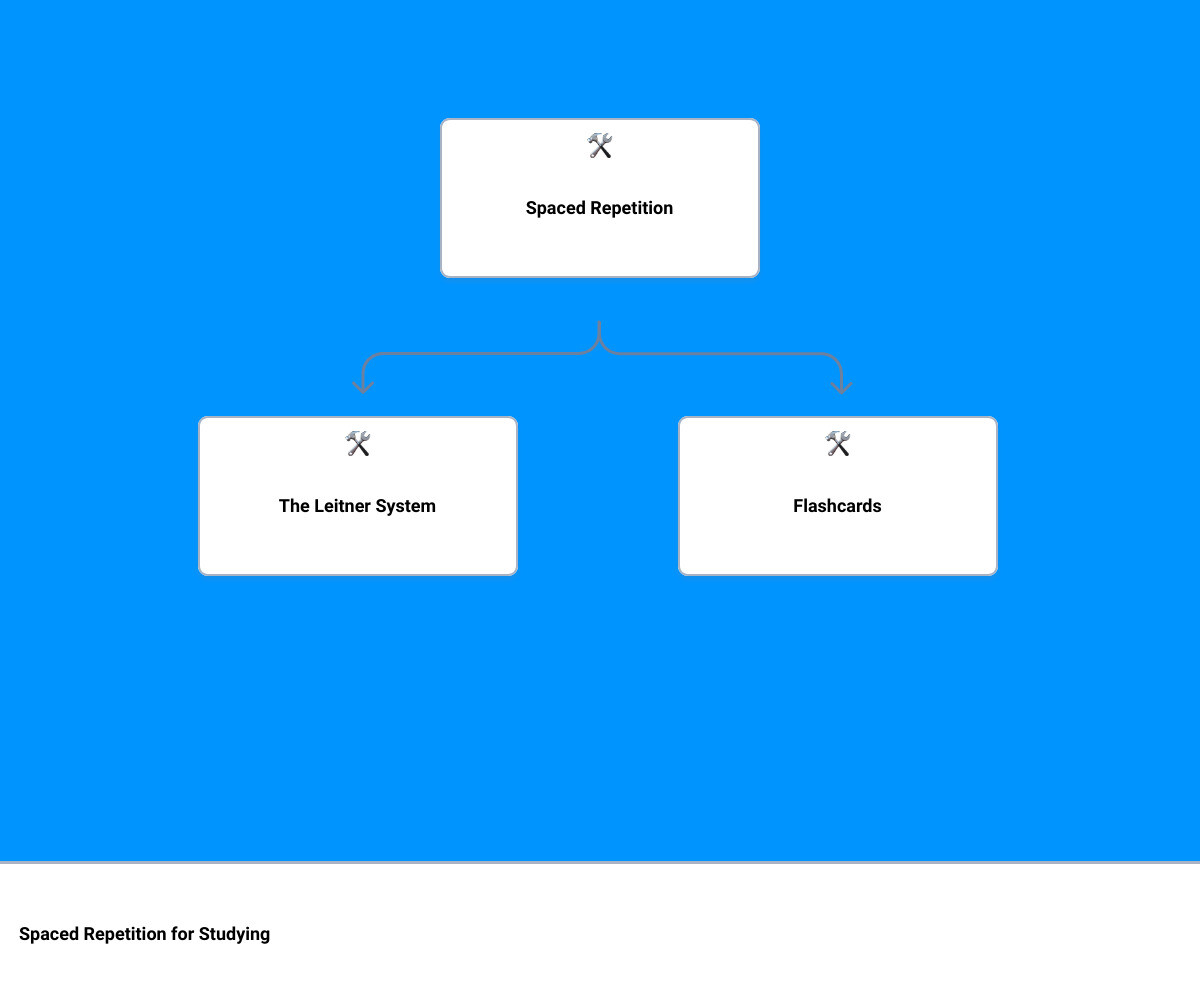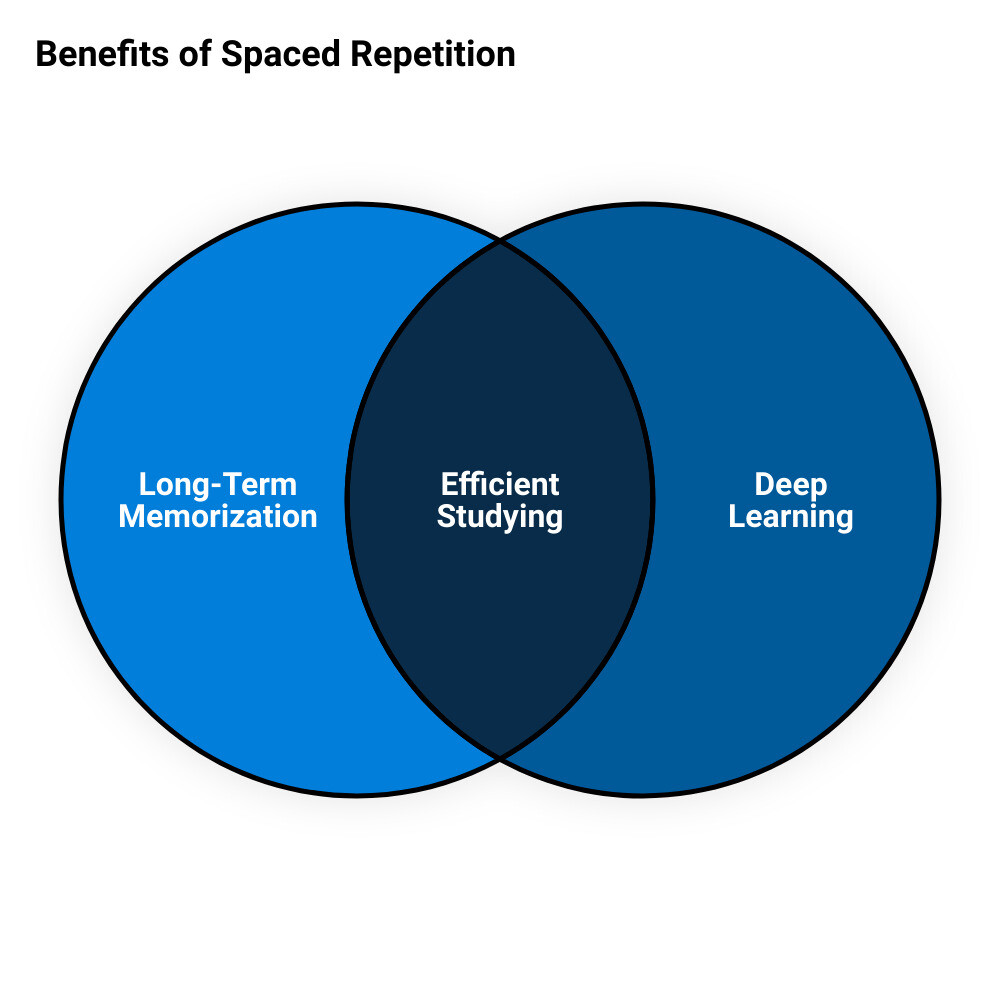Introduction to Spaced Repetition
Are you spending countless hours studying but still struggle to remember key information? Welcome to the world of spaced repetition, the secret technique everyone is talking about! This cognitive science-backed learning strategy is designed to boost your memory retention, making studying more efficient and effective. It's just like hitting the gym, but for your brain. If you've been searching for a scientifically proven way to enhance your study skills, especially for learning Mandarin Chinese, you've come to the right place.
Spaced repetition involves reviewing information at increasingly longer intervals over time, training your brain to store information in long-term memory. It's all about timing your study sessions to match your brain's natural forgetting curve, ensuring you revisit material just before it fades from memory. This method not only reinforces what you've learned but also fills in any learning gaps along the way.
This technique is not a one-size-fits-all approach. It can be personalized depending on the material you're studying, your learning style, and your memory capabilities. But don't worry, you don't have to figure it all out on your own. This article will guide you through the science behind spaced repetition, how to apply it practically in your study routine, and how technology, like the Traverse app, can assist in implementing this technique effectively.
Stay tuned as we delve into the details of spaced repetition and how it can transform your learning journey, especially in mastering Mandarin Chinese. Let's start harnessing the power of your brain to make learning unforgettable.

Understanding the Science Behind Spaced Repetition
Unlocking your brain's potential for learning might seem like trying to crack a complex code, but with the science-backed method of spaced repetition, you have the cheat sheet. Let's dive into the cognitive principles that make this approach so effective.
The Spacing Effect and Memory Retention
At the core of spaced repetition lies the spacing effect, which simply means that we learn more effectively when we distribute our study sessions over time. This concept allows our mental "mortar" to solidify, enhancing our ability to retain new information. It's like building a brick wall - if you stack the bricks too quickly without letting the mortar dry, your wall isn't going to be very sturdy. Spacing out your learning is the process of allowing that mental mortar to dry, ensuring the stability of your knowledge wall.
Storage Strength vs Retrieval Strength
In the grand library of your mind, memories are like books. They have two strengths - storage strength and retrieval strength. Storage strength, like a book on a shelf, doesn't fade over time. Once information meets a certain threshold of importance, it's stored permanently. However, retrieval strength - our ability to locate and access these books - does fade. This is where spaced repetition comes in, acting as the much-needed librarian that keeps our mental catalog organized and accessible.
The Forgetting Curve and How Spaced Repetition Combats It
Now, imagine if these books started disappearing from the library over time. This is what Hermann Ebbinghaus, a psychologist from the 19th century, demonstrated with his forgetting curve, a graph that shows how memories decay over time. However, Ebbinghaus discovered a secret weapon against this decay - regular reviews at strategic intervals. By revisiting the information periodically, you can reset the forgetting curve, slowing down the rate at which memories fade. This is the essence of spaced repetition.
In conclusion, by understanding and leveraging these principles - the spacing effect, the dual strength theory, and the forgetting curve - you can supercharge your learning process. Spaced repetition isn't just a study hack; it's a science-backed strategy to unlock your brain's potential and make your study sessions more productive and efficient. So, instead of cramming before a test and forgetting everything afterwards, why not give spaced repetition a try and make your learning truly stick?

Practical Application of Spaced Repetition for Studying
Now that we've delved into the science behind spaced repetition, it's time to roll up our sleeves and explore how to apply this powerful learning technique in real-life. Here's where the rubber meets the road. In this section, we're going to discuss the Leitner system, optimal time intervals, and using flashcards for spaced repetition.
The Leitner System: A Simple Way to Implement Spaced Repetition
First up, let's talk about the Leitner System. Invented in 1973 by German science journalist Sebastian Leitner, this simple yet effective system utilizes flashcards reviewed at fixed spacing intervals. The method is simple: create a set of flashcards and sort them into boxes (or piles) based on your familiarity with the information. When you correctly answer a flashcard, it moves to the next box with a longer review interval. Conversely, if you answer incorrectly, the card goes back to the start for more frequent review. This ensures that you're reviewing challenging information more often and reinforcing the knowledge you've already mastered at spaced intervals.
Optimal Time Intervals for Spaced Repetition
The timing of your study sessions is a vital element of spaced repetition. The "spaced" part of spaced repetition refers to the gaps of time between study sessions. The optimal schedule suggested by research is to review the material 24 hours after the initial learning session, then a week later, followed by two weeks, a month, two months, five months, and finally a year later. However, remember that these intervals are not one-size-fits-all. Depending on factors like the complexity of the information and your personal learning pace, you might need to adjust these intervals.
Using Flashcards for Spaced Repetition
The humble flashcard is a powerful tool in the arsenal of spaced repetition. Flashcards facilitate active recall, which is a cornerstone of this learning method. Active recall isn't just about rote memorization. When you use flashcards, you're not just passively reading information; you're actively retrieving it from your memory. This process deepens your understanding, builds complex connections, and enhances learning far more effectively than simply re-reading information. Digital or physical, flashcards are your secret weapon in spaced repetition learning, allowing you to hold the key to your memory literally in your hands.
By understanding and implementing the Leitner system, optimal time intervals, and flashcards, you're already on your way to supercharging your study sessions with spaced repetition. In the next section, we'll explore how technology can further enhance this powerful learning technique. Stay tuned!

The Role of Technology in Spaced Repetition
In an era where technology is not a luxury but a necessity, leveraging it for learning has become an absolute must. Spaced repetition is no exception. With the help of certain apps and platforms, this learning technique becomes more streamlined, efficient, and effective.
Using Spaced Repetition Apps like Anki and Traverse
There's a myriad of tools and platforms out there that incorporate spaced repetition. Two popular options are Anki and Traverse. Anki, based on the original SM-2 algorithm from SuperMemo, is a free-to-use platform (except for the iOS app) that gained popularity due to its user-friendliness and thriving community. It offers custom flashcards with custom scheduling, providing flexibility for your study schedules.
However, while Anki focuses on spaced repetition flashcards, Traverse takes it a step further, integrating active recall and spaced repetition into a connected note-taking system. This platform allows you to create flashcards directly from your notes, fostering a more contextual and interconnected learning experience.
How Traverse Enhances Spaced Repetition with Mind Mapping and Connected Note-Taking
Traverse introduces innovative features that take spaced repetition to the next level. Firstly, it incorporates mind mapping into your learning process. This feature helps visualize complex topics, providing a bird's eye view of how different concepts are interconnected. It's like having a map of the knowledge landscape that guides you through new territories of understanding.
Secondly, Traverse incorporates connected note-taking. This feature allows you to create links between notes across various topics, fostering a deeper understanding of the subject matter. By creating these links, you're not just learning isolated facts, but building a network of knowledge that you can easily navigate and draw from.
Importing Anki Decks into Traverse for Continued Learning
One of the advantages of Traverse is its compatibility with Anki. You can import your Anki decks into Traverse and continue your learning journey without missing a beat. This function allows you to leverage the strengths of both platforms, providing the convenience of digital flashcards, the precision of scientifically-backed algorithms, and the flexibility to adapt to your learning pace and style.
In conclusion, technology can greatly enhance the application of spaced repetition in your studies. By choosing the right tools and understanding how to use them effectively, you can optimize your learning process and remember more of what you learn. Next, we will explore how to apply these tools and techniques specifically for studying Mandarin Chinese.
Spaced Repetition for Studying Mandarin Chinese
Prepare to decode the complex script of Mandarin Chinese with a powerful tool in your learning arsenal: Spaced repetition.
The Unique Challenges of Learning Mandarin Chinese
If you've ever tried to learn Mandarin, you know it's not a walk in the park. Unlike English, Mandarin is a character-based language, with each character representing a syllable and carrying a specific meaning. With an estimated 50,000 characters, this presents a formidable challenge. The task of not just understanding, but remembering thousands of unique characters, each with its own pronunciation, tone, and meaning, can feel daunting.
How Spaced Repetition Can Help Overcome These Challenges
But fear not, the science of learning comes to the rescue with spaced repetition. This learning strategy, which involves reviewing lessons at increasing intervals, can significantly reduce the complexity of learning Mandarin. By training your brain to remember and recall the characters at strategic intervals, you reinforce your memory. Characters you find challenging will be reviewed more frequently, allowing you to focus your attention where it's needed most. Simultaneously, those you recall easily will be reviewed less often, freeing up your time and mental energy for more difficult content. This transforms the initially intimidating task of learning thousands of characters into a manageable one, securing these characters in your long-term memory.
Using Traverse in Partnership with Mandarin Blueprint for Effective Mandarin Learning
Now, let's discuss how to put this theory into practice with the help of Traverse, a learning platform that combines the power of spaced repetition with advanced algorithms. Through a unique partnership with Mandarin Blueprint, Traverse offers a comprehensive Mandarin course.
Mandarin Blueprint provides immersive course content that covers everything from basic vocabulary to complex sentences. Traverse's spaced repetition system ensures that this knowledge sticks, adapting to your performance and scheduling reviews at the optimal time to aid retention. This combination of a comprehensive curriculum with a personalized review schedule makes for a learning experience that is not just efficient, but also enjoyable and rewarding.
Furthermore, Traverse offers the ability to import your Anki decks, preserving your scheduling information and letting you continue your learning journey without any disruptions.
By leveraging Traverse and Mandarin Blueprint, you equip yourself with the tools and resources you need to achieve long-term proficiency in Mandarin. Get ready to convert the daunting task of learning Mandarin into a rewarding and successful language learning journey.

The Benefits of Spaced Repetition for Studying
As you immerse yourself in the world of Mandarin learning, you'll quickly discover that the real secret to fluency isn't about cramming or brute force repetition. It's about smart, strategic studying. That's where spaced repetition comes in. This powerful learning technique offers numerous benefits that will boost your Mandarin mastery and beyond. Let's dive into the top three benefits of spaced repetition for studying.
Improved Long-Term Memorization and Test Results
Every learner's dream is to memorize information for the long haul, not just for the next test. Spaced repetition is renowned for its ability to foster long-term memory retention. By continually re-exposing you to information at spaced intervals, your brain builds memories with high levels of storage strength. This improves your ability to recall and retrieve information over time, making it a potent tool for acing your tests and retaining knowledge for future applications.
Efficient Studying by Focusing on Challenging Material
Spaced repetition isn't just about memorizing better—it's about studying smarter. The beauty of this method lies in its efficiency. By introducing calculated intervals of forgetting, you can focus on the material that challenges you the most. This practice, known as desirable difficulty, suggests that a certain level of difficulty in retrieving a memory is actually beneficial for learning. Spaced repetition allows you to strategically plan your study sessions to match your brain's natural memory processes, reducing the time you spend relearning forgotten information. This way, you can use your study time more effectively and yield better results.
Deep Learning with Minimal Interruption to Your Schedule
Finally, one of the most appealing benefits of spaced repetition is its compatibility with busy schedules. The technique allows you to break up larger tasks into smaller chunks of work spaced at intervals throughout the day, an approach called chunking. This not only enhances the efficacy of your learning process but also makes it easier for you to incorporate study sessions into your daily routine.
Spaced repetition ensures that new information is consolidated with related knowledge already stored in your long-term memory, fostering a deeper understanding of the material. Over time, your brain learns to predict when it will next see the material, responding with greater alertness and attention. This makes it easier for information to be encoded into long-term memory, leading to deeper learning.
In summary, spaced repetition offers a trifecta of learning benefits: improved long-term memory, efficient studying, and deep learning with minimal disruption to your daily routine. By incorporating this technique into your study strategy, you can boost your Mandarin learning efforts and reap the rewards of an optimized learning process.
Conclusion: Boost Your Study Skills with Spaced Repetition
Mastering a new language like Mandarin or acing your next big exam doesn't have to be an uphill battle. With the scientifically-backed method of spaced repetition, the daunting task of retaining information becomes a manageable feat. By leveraging our brain's natural learning mechanisms and the power of active recall, this technique provides an efficient and effective approach to studying.
Spaced repetition is a secret weapon in the world of learning. It allows you to boost your memory retention, focus on challenging material, and achieve deep learning without causing major interruptions to your daily schedule. Whether you're a busy student trying to juggle multiple subjects or a lifelong learner diving into the complexity of Mandarin Chinese, spaced repetition offers an optimal path to success.
The key to unlocking the full potential of this technique lies in its correct application. Combine this technique with a well-structured study plan, optimal time intervals, and effective learning tools like flashcards. Remember, the aim is not just frequent review, but reviews spaced at strategically increasing intervals. It might take some trial and error to find the perfect rhythm, but once you do, you'll notice a significant improvement in your learning efficiency.
Embrace the power of technology too. Platforms like Traverse take the guesswork out of spaced repetition, automating the spacing intervals based on your individual learning needs. Plus, integrated tools like mind mapping and connected note-taking can further enhance your study sessions.
As you embark on your journey with spaced repetition, remember that it's a marathon, not a sprint. Consistency is key here. It might take some time and effort, but rest assured, the results are worth it.
In conclusion, give spaced repetition a try and experience the transformation in your studying process. It's time to turn the tide in your favor, conquer your learning challenges, and boost your study skills like never before. Happy studying!

